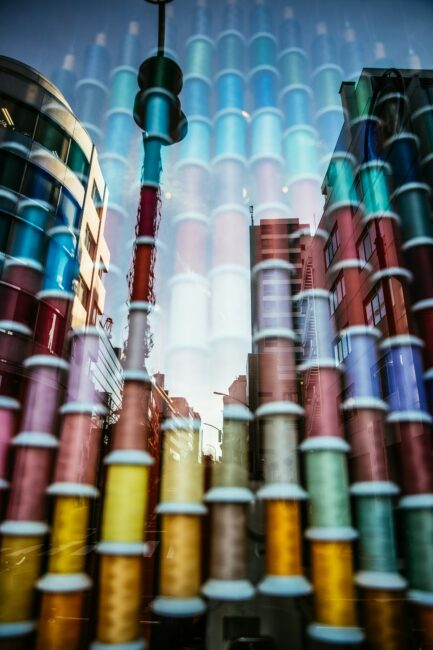The next milestone of my free inquiry project is to sew a garment. I started this project online by watching a series of how-to videos. Next, I went on Amazon and ordered a pattern. After that, I went to Fabric Land, picked out some material, and asked for advice on my project. However, I was immediately taken aback by the sheer volume of fabrics and thread when I stepped in. The store boasted a repository of almost every color and pattern I could imagine. I felt thankful to be born in such a time of abundance and knowledge. Reflecting on my sewing journey, I realize it has been relatively painless. I have found step-by-step guides on everything from stitching techniques to DIY fashion. Want a suit pattern from 1940? No problem, it’s on Etsy. Neon-green thread? A five-pack is arriving tomorrow, courtesy of same-day delivery from Amazon. However, this was not always the case. Throughout history, textiles have often been scarce and produced by hand, and access to the information surrounding them was protected like state secrets. To expand my base on knowledge for the free inquiry project, I have ordered a highly regarded book on the history of textiles called The Fabric of Civilization: How Textiles Made the World, written by Virginia Postrel.
Through reading this book, I intend to make important curricular connections that will allow me to link my free inquiry project of sewing to Social studies, anthropology, and history. These connections will allow me to take a dynamic approach to teaching and sharing the craft with others and inform my understanding of the trade. To better understand the history of textiles and the medium, it is vital to understand its connection to culture, history, and colonialism. I want answers to help develop my understanding of sewing and textiles: Why were specific garments in history created? Was it function over form or the other way around? How were such intricate patterns created in early fabric? And what techniques or ideas have been handed down throughout generations. Hopefully, I will be able to answer some of these questions before my final project begins with creating my garment.
Photo Credit for Featured image. Thank you to Zachariah Hagy from Unsplash for the image. You can find Zachariahs’ work here
